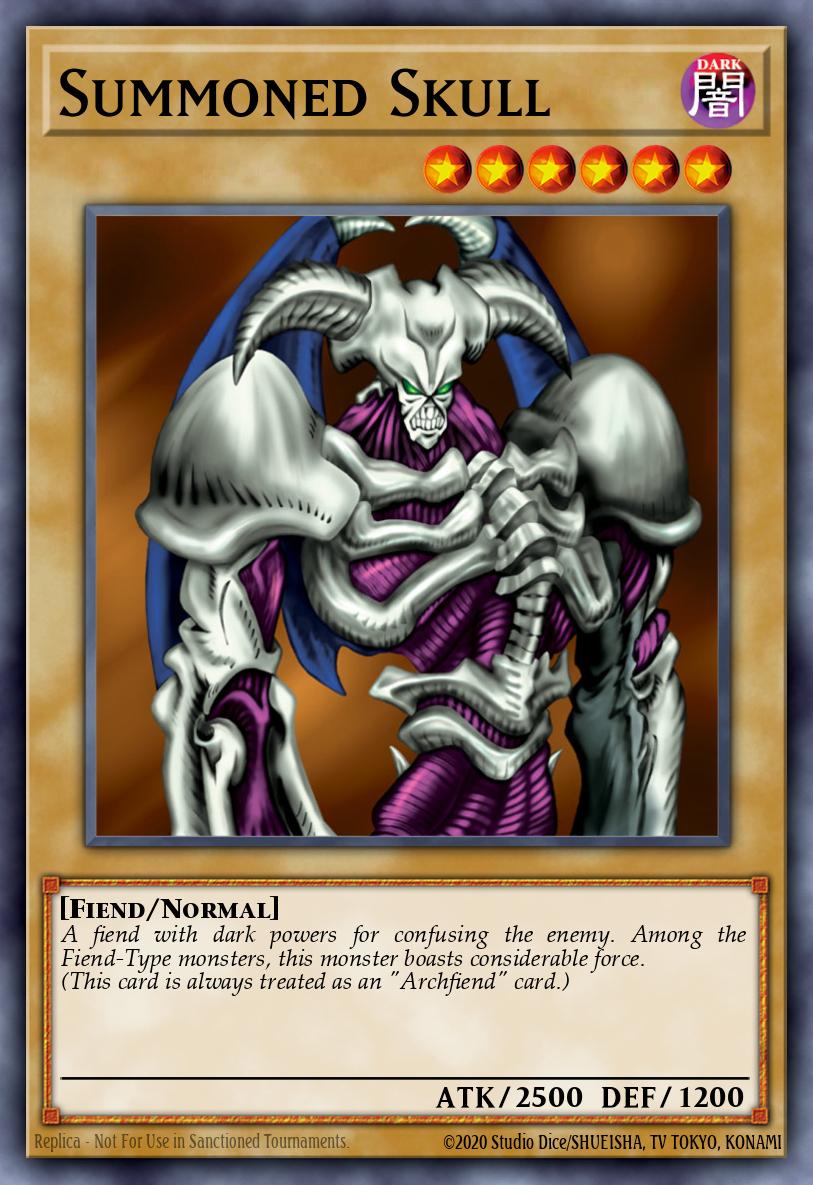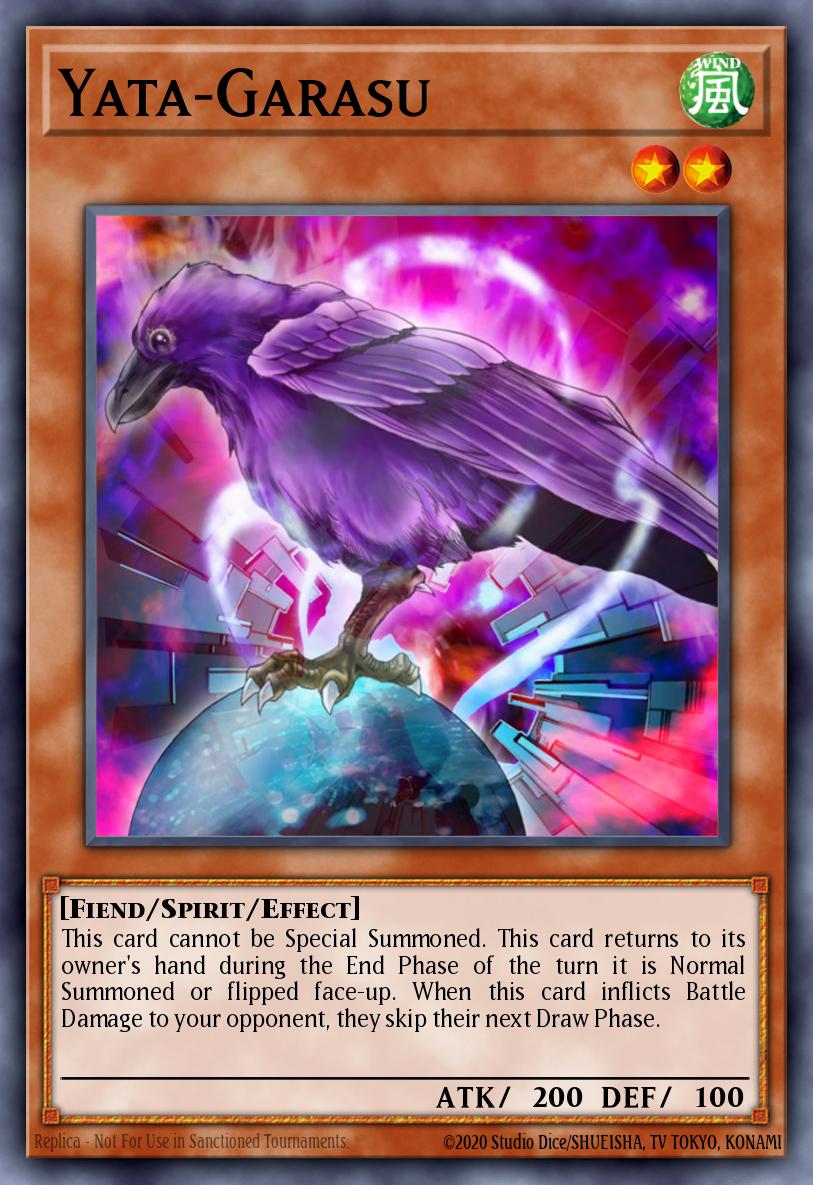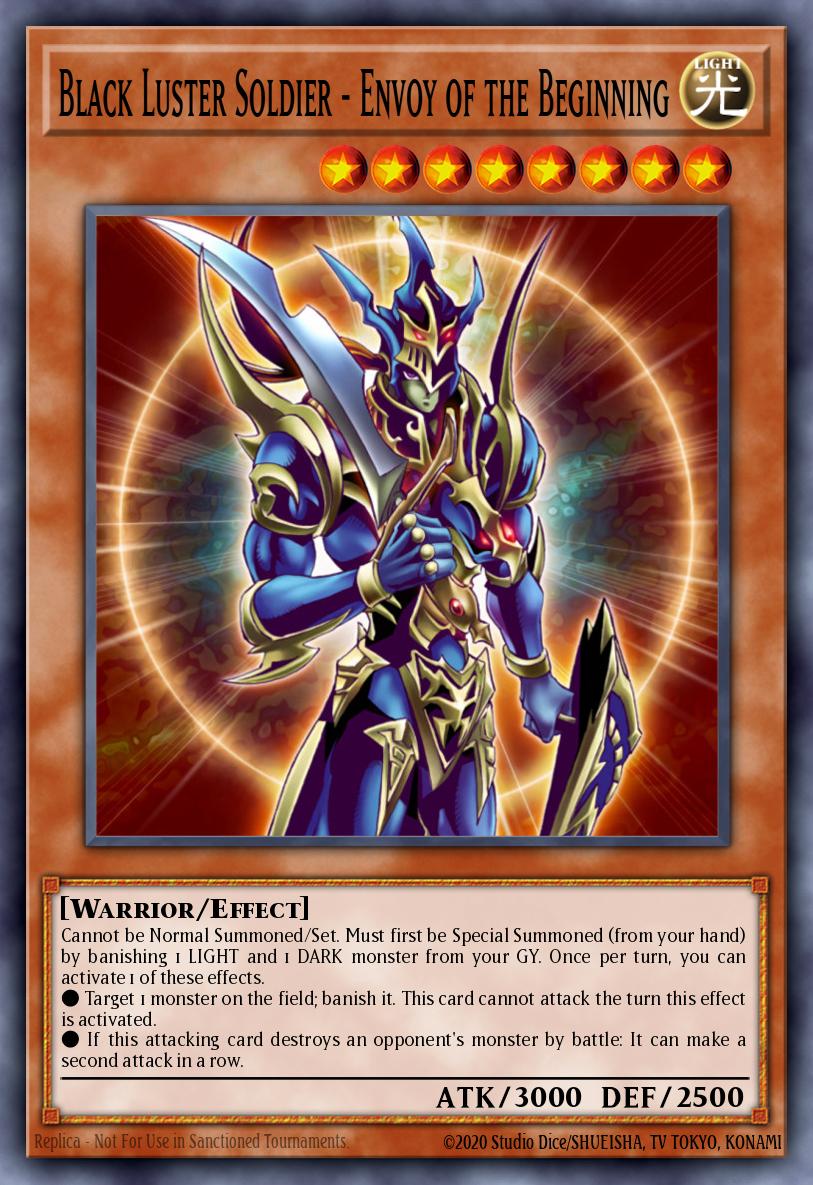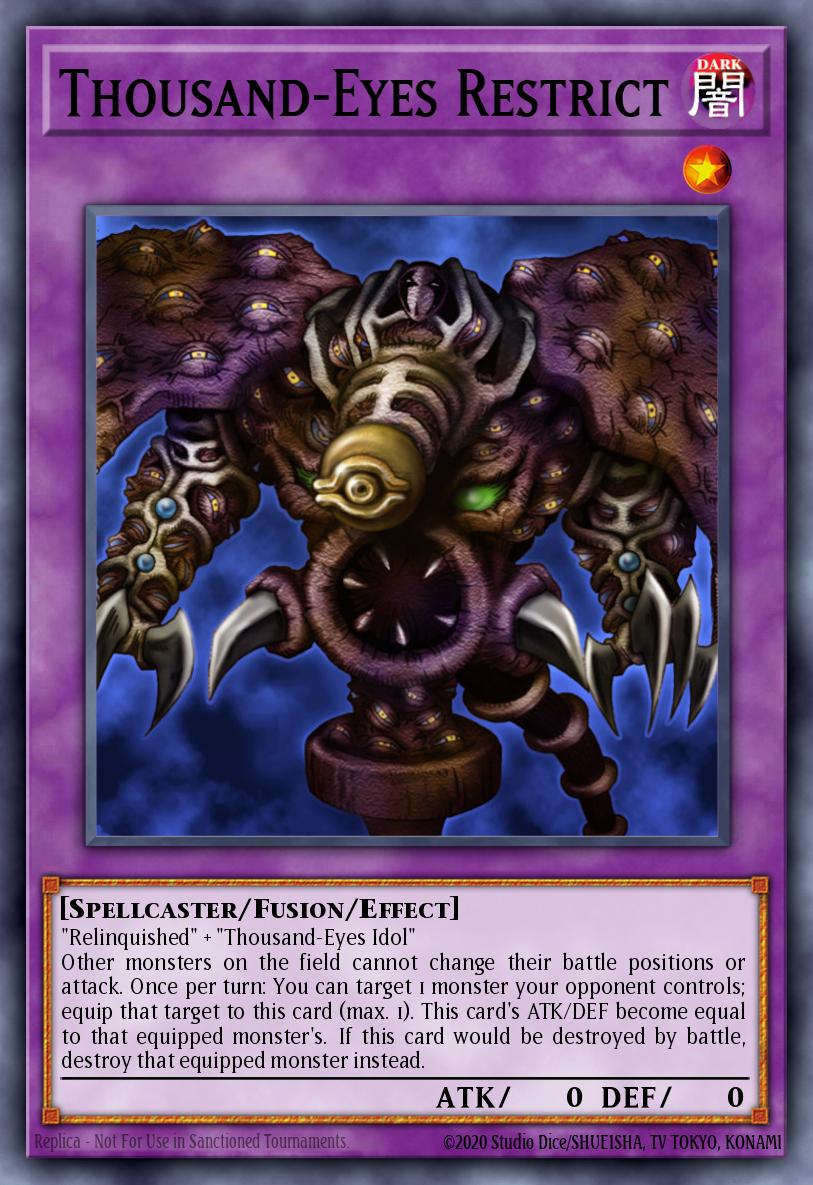Duel Monsters' popularity eventually led to the manga shifting its focus entirely toward it, and also to the release of the first physical Duel Monsters cards by Bandai. These cards were not truly designed to be used in a playable game format, and were more collectors' pieces than anything – factors which shortened their print run. The idea didn't really take off any further until Konami created an official trading card game in 1998. This version of the game included new rules not seen in the manga, most notably Tribute Summoning and the increase of Life Points from 2000 to 8000. The game rapidly gained steam in Japan, becoming a sensation almost instantly, alongside the premiere of the Yu-Gi-Oh! Duel Monsters anime in 2000. This further solidified the franchise's popularity, leading to an eventual worldwide export of both the show and the cards in early 2002.
2002
The trading card game we know today began all the way back in March of 2002 with the release of the first-ever TCG booster set, Legend of Blue-Eyes White Dragon, and the first two Starter Decks which corresponded with Yugi and Kaiba, the two main characters of the anime. At this very early stage in the game’s history, the cardpool was extremely small. Most monsters were either Normal Monsters or had rudimentary, one-line effects. As the game advanced and more cards were released throughout 2002, many of the emerging higher-level players recognized that Summoned Skull was going to be the power benchmark. As a Level 6 monster with 2500 ATK, Summoned Skull was stronger than every other one-Tribute monster, and even stronger than most two-Tribute monsters that existed at the time.
 Summoned Skull
Summoned SkullAnother defining feature of the game's early evolution was the powercreep of Level 4 monsters in terms of ATK. From the beginning, La Jinn, the Mystical Genie of the Lamp set the high mark for ATK on non-Tribute monsters with his 1800 ATK. This would soon be pushed even further with the release of Mechanicalchaser (1850 ATK) in the first Tournament Pack. Although this card was stronger than La Jinn and the other 1800 ATK monsters that were starting to pop up in other booster sets, it never properly dominated the game because of how difficult it was to get. Being the rarest card in a pack that was only distributed as a tournament prize, Mechanicalchaser was not widely accessible, meaning that while it was the most powerful tribute-less monster of its time, it was not the most iconic in terms of seeing play.
This period of the game's history is therefore often remembered as, "Summoned Skull Beatdown Format." This is bit of a misnomer, though: while the strongest decks in 2002 were definitely the ones that used Summoned Skull to do the most damage, there was no concept of a "format" then as we think of it today. Because the game was so new, the community was underdeveloped and the average age of the playerbase was skewed in a younger direction, as most players then became fans due to the anime which was marketed at children. These factors, combined with the lack of large tournaments in TCG regions, the absence of a robust secondary market and developed theory on the game, and an overall tiny cardpool, led to an extremely varied and seemingly random "meta." Although most decks used some variant of a beatdown strategy, there were no universally accepted best builds, and many players often used subpar cards.
Even then, the most powerful cards in the game could be narrowed down to a small set: Monster Reborn, Pot of Greed, Raigeki, Dark Hole, Change of Heart, and Heavy Storm. All of these cards immediately found their way onto the early incarnations of the Forbidden List (at that point just a Limited List). They shared the common feature of having extremely powerful effects that were essentially cost-free and had little to no counterplays. The first booster set to really shift the focus of many decks from relying solely on those original power cards was Magic Ruler (later renamed Spell Ruler). As its name suggests, the set introduced a variety of powerful new Spells to the game, including The Forceful Sentry, Delinquent Duo, Confiscation, Mystical Space Typhoon, Painful Choice, and Snatch Steal. Although none of these cards held quite same the power as the original staple cards, they all saw widespread play almost immediately.
The final set of 2002, Pharaoh’s Servant, introduced one final important card to the game: Jinzo. Jinzo was unique at the time for being only slightly weaker than Summoned Skull while also carrying an extremely powerful effect. Its negation of Traps like Mirror Force and Trap Hole meant that the card allowed players to bypass many of the era's popular defensive strategies, and it became a staple in many beatdown decks as well.
 Pot of Greed, Monster Reborn, Jinzo
Pot of Greed, Monster Reborn, Jinzo2003
Going into 2003, the best deck was still Beatdown, but as the cardpool expanded, so did the Beatdown strategy. Even as the release of Gemini Elf brought about a new benchmark for Level 4 ATK, the ever-growing number of available Effect Monsters shifted the prevalent playstyle away from Summoning sheer damage dealers toward a wider set of strategies involving cards like Kycoo the Ghost Destroyer and Bazoo the Soul-Eater. The overall pool of staple power cards was also evolving at a rapid pace. With every new TCG set, multiple must-have Spells and Traps were released and had to be added to any deck that wanted to compete. Some examples of such staples include United We Stand, Torrential Tribute, Graceful Charity, and Harpie’s Feather Duster.
 Yata-Garasu
Yata-GarasuAt the same time, newer sets like Legacy of Darkness and Pharaonic Guardian released support involving monster Types. While these more dedicated strategies did not take off in the competitive scene, decks like Warriors, Fiends, and Zombies began to see play in the first half of 2003 at the local level.
This year also saw the first truly large-scale tournament in the TCG: the 2003 World Championship. The World Championship showed that, while Beatdown was still by far the most popular deck type, the Hand Control strategy was more potent. That deck focused on discarding cards from the opponent's hand using cards like Confiscation, Delinquent Duo, Forceful Sentry, Don Zaloog, and Drop Off, leaving them with very little resources with which to make a comeback. The deck was also tied together by its ability to more fully take advantage of the extremely powerful Yata-Garasu, a card which could singlehandedly win games. Hand Control proceeded to claim both of the top 2 spots at the World Championship, but it did not dominate the meta as a whole. The TCG still didn’t have many higher-level tournaments, so most competitive play was relegated to the local level. The Hand Control deck therefore did not see extremely widespread usage among the playerbase at the time, despite its success and clear advantage over a dedicated Beatdown strategy.
The second half of 2003 saw the introduction of a new deck revolving around Magical Scientist. This deck was primarily notable for being the first FTK deck to gain competitive traction. It focused on using Magical Scientist's effect to summon various Fusion Monsters and Tribute them with Catapult Turtle to deal 8,000 damage to the opponent's Life Points before the opponent could take a turn. However, the deck's strategy was not consistent enough for it to ever really gain a significant foothold in the competitive scene. By the time the year was ending, Beatdown still saw the most use in tournaments, but more Control-oriented builds were starting to crop up.
2004
2004 was dominated by the release of Invasion of Chaos early in the year, and with it, the "Chaos monsters." The two main monsters in the set, Chaos Emperor Dragon - Envoy of the End and Black Luster Soldier - Envoy of the Beginning, completely and utterly shifted the competitive meta.
 BLS: Envoy of the Beginning
BLS: Envoy of the BeginningThey were unrivaled in terms of the combination of powerful effects, high ATK, and ease of Summoning (they could be Special Summoned by their own effects, which was a relatively new to concept in card design at that point).
Chaos also came onto the TCG scene around the same time that larger and more competitive events started to happen. The start of Regional Qualifiers, as well as the growth of the online community, allowed a more uniform meta to truly shape around the Chaos Control deck. Chaos Control as a strategy was less of a revolutionary new playstyle and more the end goal toward which deckbuilding had been trending since early 2003. Most of the deck’s core was made up of all the best staple cards available at the time, making it very similar overall to the Hand Control and Beatdown decks preceding it. The major difference was the need to include both LIGHT and DARK monsters to facilitate the Summoning of Chaos monsters. While DARK monsters had already been popular in the metagame prior to Chaos, the LIGHT Attribute had not seen much use. To address this, most Chaos players focused their LIGHT monster lineup almost entirely around D.D. Warrior Lady, running 3 copies of her and often running 1 or 2 Shining Angel to help summon her from the deck. D.D. Warrior Lady was an especially potent card at the time, as she offered non-destruction removal, something which had not been a concern up to that point. Reflect Bounder, which was released in the same set as D.D. Warrior Lady, also saw some play in Chaos decks as a LIGHT monster.
Something else to note about Chaos format was how 2 new booster sets were released during its reign but neither of them was able to make any kind of dent in the meta. Other than occasionally including some cards like Enemy Controller and Mobius the Frost Monarch, the most powerful decks didn't really change throughout 2004 because they didn't need to. Chaos was so completely domineering that the first-ever Forbidden List had to be released in October, 2004, and several of the most dominant power cards (Raigeki, Harpie's Feather Duster, Chaos Emperor Dragon, and Yata-Garasu) were banned entirely from play. However, the Chaos control deck managed to stay relevant throughout the rest of 2004 even while focusing on Black Luster Soldier alone as its boss monster.
2005
The beginning of this year was a continuation of the post-Forbidden List format. The meta was still dominated by Chaos variants, now focused entirely on exploiting Black Luster Soldier and Magical Scientist to push through games. The format didn't shift away from being completely ruled by Chaos until the second Forbidden List in the spring of 2005. which banned most of the remaining power cards that could instantly swing a game for little cost, including Magical Scientist, Fiber Jar, Painful Choice, Confiscation, and The Forceful Sentry. Also notable is that D.D. Warrior Lady, still one of the most popular cards in the meta, was Limited. During the period immediately following this List, the game entered the famous Goat Format.
 Thousand-Eyes Restrict
Thousand-Eyes RestrictGoat Format was ruled by Goat Control, a further evolution of the Chaos Control deck which focused on utilizing Scapegoat and Metamorphosis to summon Thousand-Eyes Restrict. The sheer number of power cards removed by the first two Forbidden and Limited Lists paved the way for a much slower and more methodical game. One of the most notable results of this slowing-down was the increased prevalence of Flip Monsters in the meta. While the format is known for the Goat Control deck, the aforementioned meta-depowering allowed a slew of different decks to compete in the meta, albeit mostly in a rogue capacity. The best deck was undoubtedly Goat Control, but it was not so domineering that other decks like Zombies, Machine Beatdown, Flip Effect Control, and Monarchs couldn't compete at all. In particular, Zombie Chaos decks and some Monarch decks managed to see relatively reliable success throughout the format, primarily because of the splashability that all the remaining staple cards turned out to have.
The most successful rogue decks, however, were two different decks that earned a top spot at the 2005 World Championships. The first of these decks, Machine Beatdown. focused largely around abusing the power of Limiter Removal, which was Unlimited at the time, to easily OTK opponents. The other deck, known as Flip Control or Flip Flop, was based entirely around cycling Flip Effect monsters, primarily through the use of Night Assailant and Tsukuyomi. Both of these cards allowed for the abuse of cards likr Morphing Jar and Des Lacooda in order to maintain card advantage and slowly grind the opponent out of resources. The deck performed particularly well because of how potent Night Assailant was against Goat Control, as its effect completely bypassed Delinquent Duo, a very popular staple card.
Goat Format lasted 6 months in the TCG, and ended in September of 2005 with a combination of two major changes to the game, the first of which was the release of Cyber Dragon. This card, released in Cybernetic Revolution in August, 2005, would soon prove to be a new benchmark in the metagame. Prior to Cyber Dragon's release, a monster Summoned on a player's first turn would almost always have 1900 ATK at most, and these powerful stats were mostly seen on Normal Monsters or monsters with otherwise weak effects. The only real exceptions to this, lIke Goblin Attack Force and Berserk Gorilla, had drawbacks that prevented them from seeing truly universal play. Generally, players would Summon one monster per turn unless they happened to have Black Luster Soldier, Premature Burial, or Call of the Haunted in their hands. Cyber Dragon changed all this by allowing players to easily Summon a monster with 2100 ATK while also not using up their Normal Summons. This alone rendered irrelevant a large number of high-ATK, lower-level monsters, while also making Tribute Summoning a much more easily accessible mechanic. In previous formats, players who wanted to Tribute Summon quickly would need to sacrifice card advantage (by using multiple cards to get monsters onto the field before using their Normal Summon) or time (by taking up turns setting up Tribute fodder). Cyber Dragon made all that easier, and cemented itself as a staple in the entire game.
The September 2005 Forbidden List also helped spell the end for Goat Format. Graceful Charity, Sinister Serpent, Delinquent Duo, and Black Luster Soldier were all Forbidden, and thus most of the biggest power cards of the format were eliminated. Furthermore, Thousand-Eyes Restrict, Scapegoat, and Metamorphosis were all Limited, making the famous Goat combo itself inert and inconsistent. Tsukuyomi, Book of Moon, and Night Assailant were also Limited as a way to hit both Flip Control and many Goat Control decks that utilized them. Finally, Limiter Removal was Limited in order to check Machine Beatdown, in consideration of both its present power and the new tool it had received in Cyber Dragon. As Goat Format ended, Chaos returned to being the most prevalent deck type throughout the last part of the year. The only major decks that could challenge it were Monarchs and some straggling Zombie and Machine Beatdown decks, but overall, it was the undoubted best deck of its time.
 Scapegoat, Tsukuyomi, Cyber Dragon
Scapegoat, Tsukuyomi, Cyber DragonThe end of 2005 also marked the end of an era in Yu-Gi-Oh! card design. Gone would be the days of Summoning a monster with 1900 ATK, setting a few Traps, and ending one's turn. As the cardpool grew immensely, new strategies emerged which forced players to approach the game with more complex and aggressive planning and thought processes than ever before.
End of part 1...
Shoutout to /u/OnlinePosterPerson on Reddit who was the inspiration for this article.




